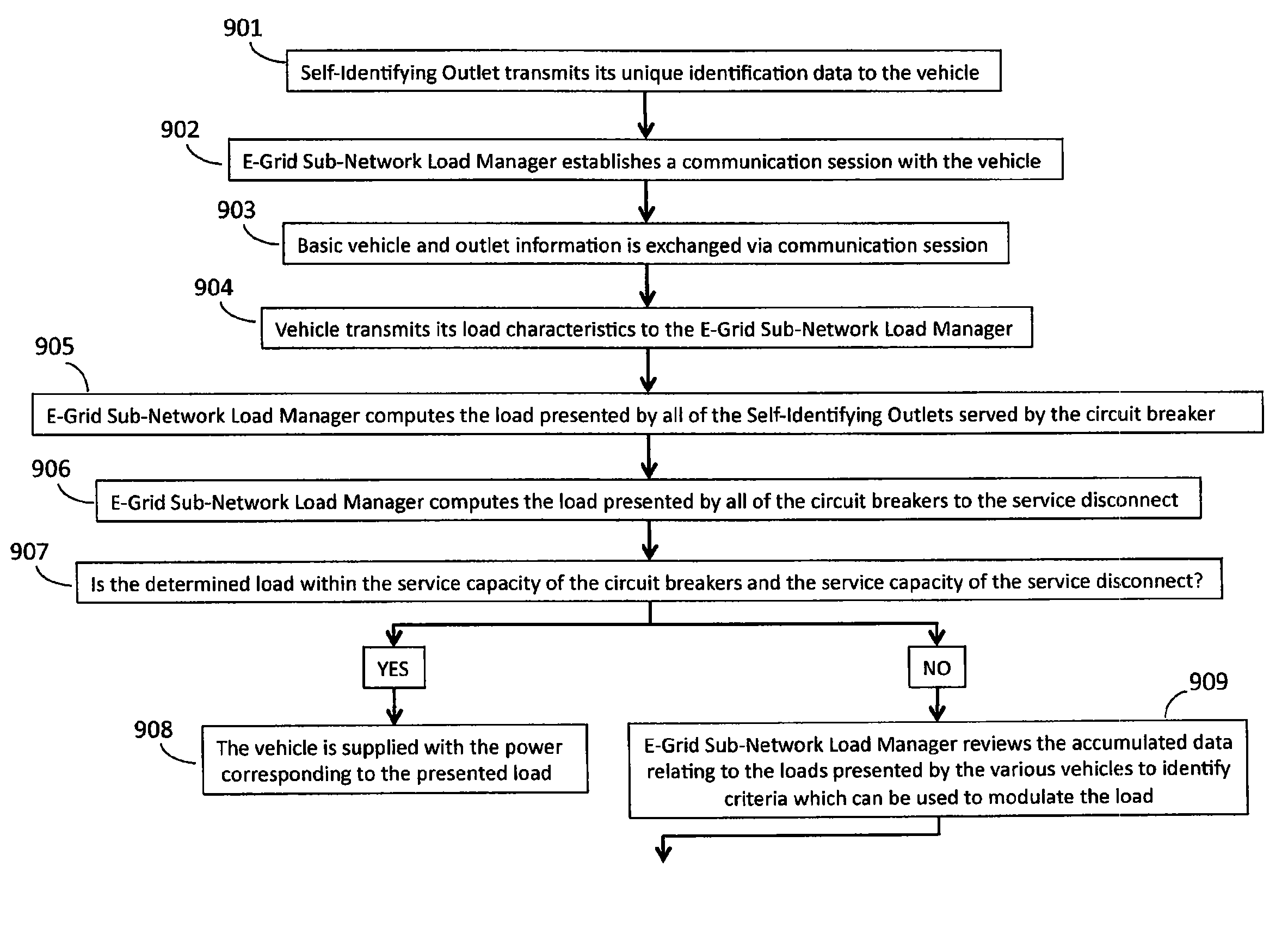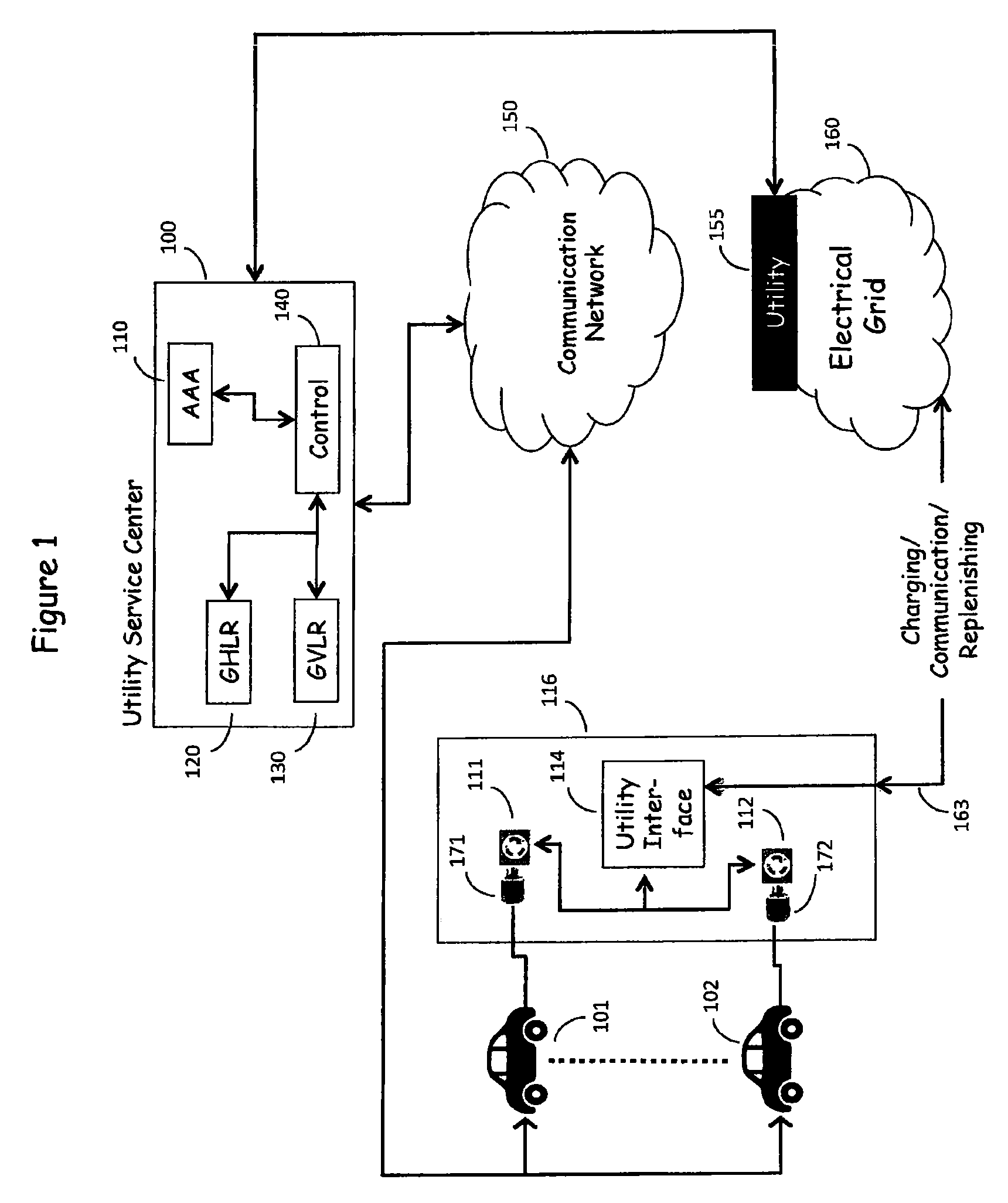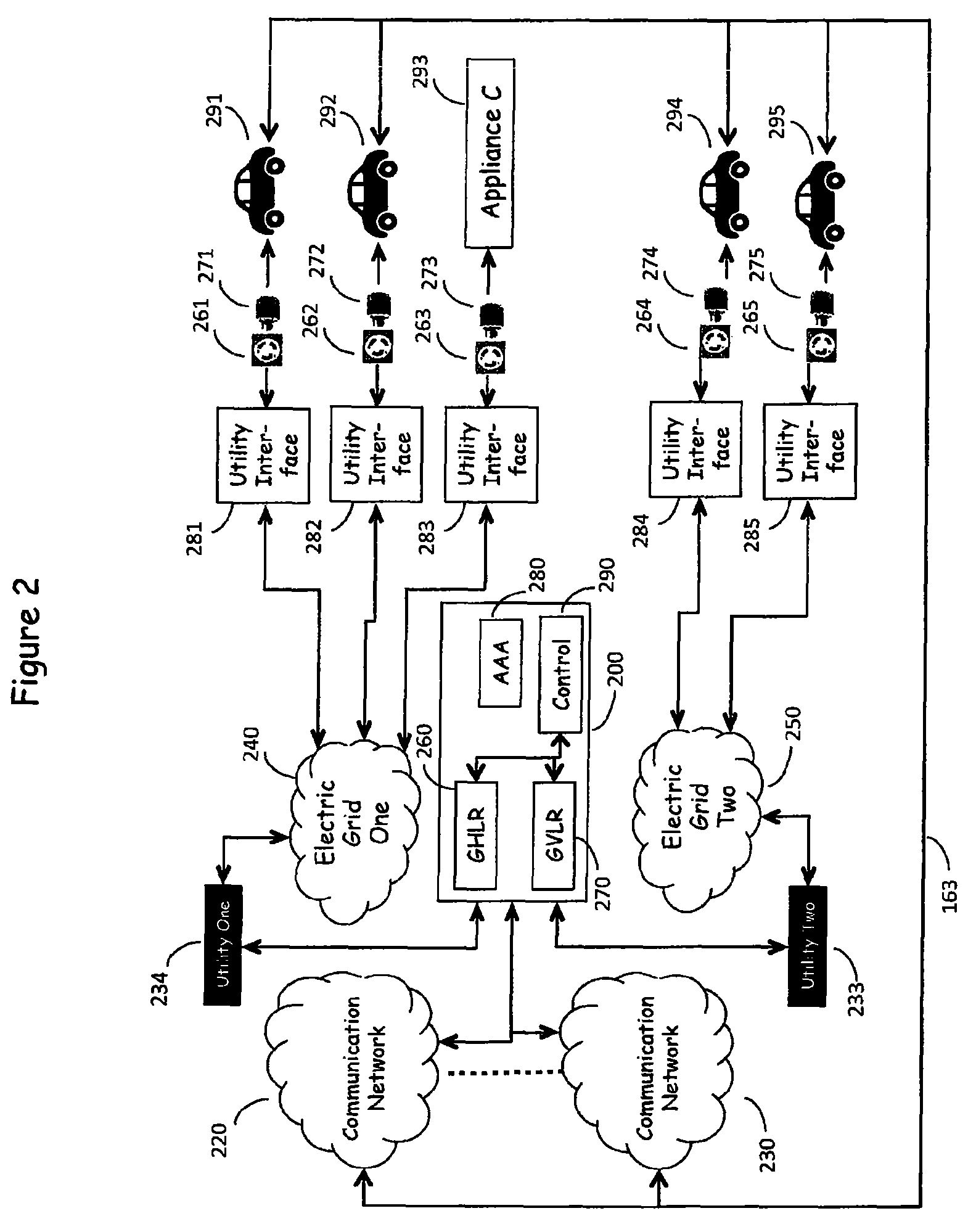Intra-vehicle charging system for use in recharging vehicles equipped with electrically powered propulsion systems
a charging system and electric propulsion technology, applied in the direction of electric devices, data processing applications, process and machine control, etc., to achieve the effect of reducing the load on the e-grid and rapid recharging
- Summary
- Abstract
- Description
- Claims
- Application Information
AI Technical Summary
Benefits of technology
Problems solved by technology
Method used
Image
Examples
utility embodiment
Multi-Utility Embodiment
[0045]FIG. 1 is in reality a multidimensional network in which N electric utilities are served by M Electric Grids with corresponding communication networks, as shown in FIG. 2.
[0046]Electric Grids 240, 250 shown in FIG. 2 represent the source of electric power, as provided by multiple utility companies which serve a wide geographic area and provide electric power to a multitude of customers via utility interfaces 281-285. The utility interfaces 281-285 serve to measure the energy consumption by the various outlet connected loads, such as Vehicles 291-295. These elements represent the existing, present day electric power delivery infrastructure as described above. Electric power traditionally flows from the Electric Grid 240, 250 to the utility interfaces 281-285 and thence to the customer's loads—Vehicles 291-295 via plug 271-275-outlet 261-265 combinations, but power also can flow in the reverse direction, from the vehicular battery banks of Vehicles 291-29...
PUM
 Login to View More
Login to View More Abstract
Description
Claims
Application Information
 Login to View More
Login to View More - R&D
- Intellectual Property
- Life Sciences
- Materials
- Tech Scout
- Unparalleled Data Quality
- Higher Quality Content
- 60% Fewer Hallucinations
Browse by: Latest US Patents, China's latest patents, Technical Efficacy Thesaurus, Application Domain, Technology Topic, Popular Technical Reports.
© 2025 PatSnap. All rights reserved.Legal|Privacy policy|Modern Slavery Act Transparency Statement|Sitemap|About US| Contact US: help@patsnap.com



